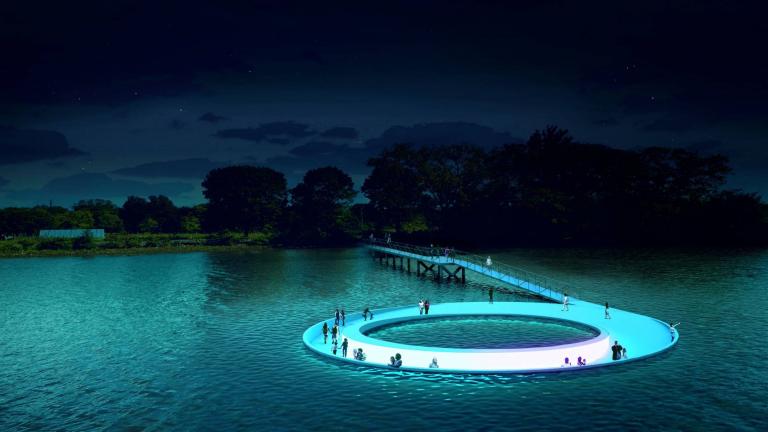
Float Lab, J. Meejin Yoon’s installation for Bartram’s Garden in Philadelphia, is at once a viewing platform, a floating vessel, and a lens through which the public can experience the ecology of the Schuylkill River, whose environmental health has been affected by every phase of energy development in America, from coal to oil, nuclear power, and natural gas today.
Offering an eye-level view of the river, Float Lab provides unexpected visual and physical relationships with the water’s surface. The 2017 MIT Center for Art, Science & Technology (CAST) Mellon Faculty Grant allowed Yoon to work with environmental scientists at MIT and in the Delaware Valley watershed on educational programs for the installation, creating a programmatic loop that examines the relationships between environmental science, environmental experience and environmental stewardship.

Rendering of Float Lab. Courtesy of J. Meejin Yoon.
Cconceived of as a learning laboratory in which to witness a fragile ecology, Float Lab is a steel structure featuring a 75-foot-diameter circular footpath submerged in the river. Sections of the path dip well below the river’s surface, allowing visitors to stand at eye level with the waterline. Hidden speakers play underwater recordings in real time to passersby, and lighting effects reveal fish patterns. This shift in perspective for the viewer, in addition to the underwater sounds, creates a physical space that indexes and measures the invisible properties of the water.
The project explores the potential to create awareness through mediated collective experience, using sound technology and an environmental art installation within the public realm to provide a platform for collective learning. Operating between the fields of environmental art and environmental science, Float Lab synthesizes disparate programs and concepts: industrial areas and botanical gardens, toxic remediation and ecological growth, science and art.

Rendering of Float Lab. Courtesy of J. Meejin Yoon.



